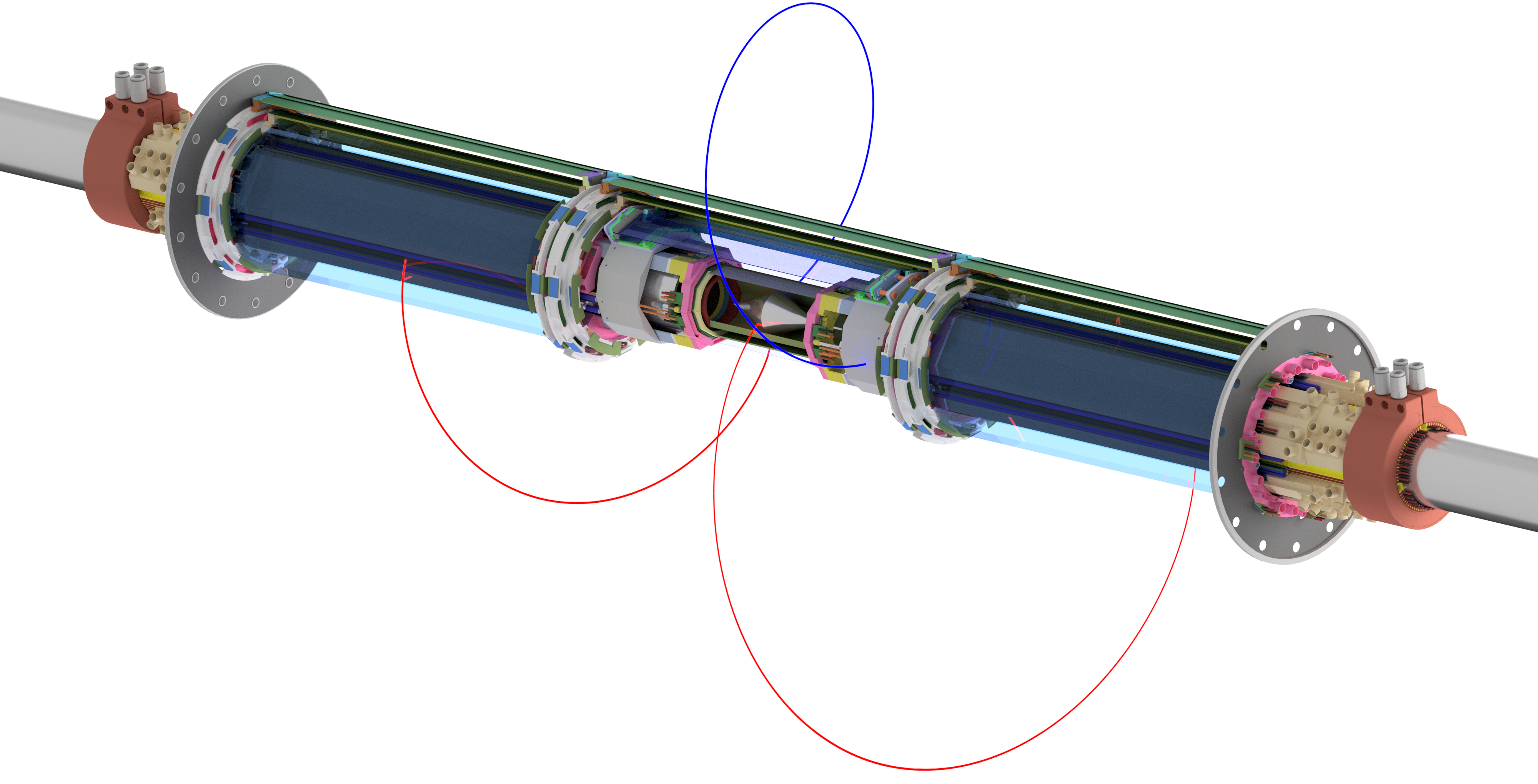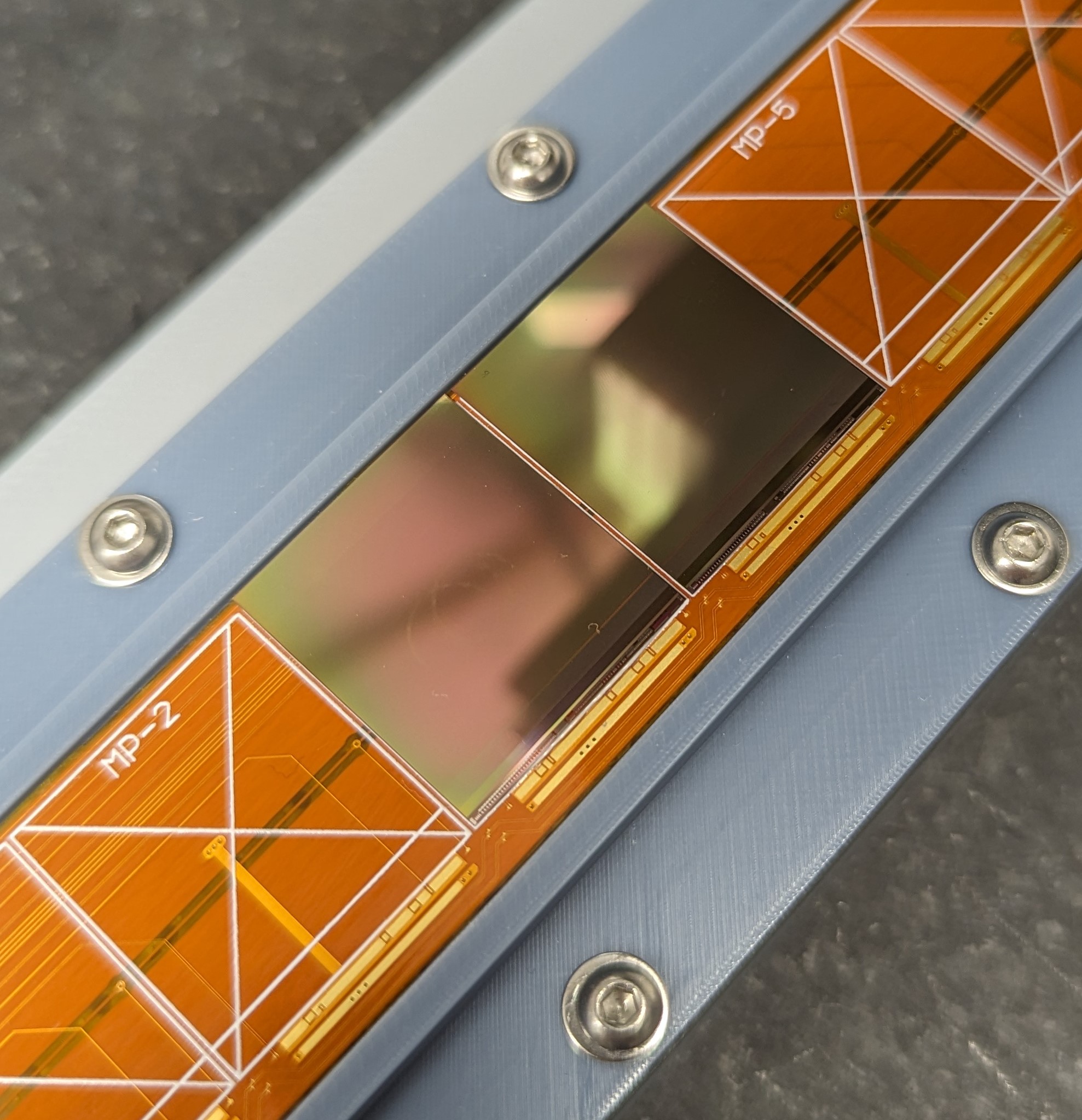Mu3e Experiment (PSI)
Conservation Laws and Lepton Number Violation
The decays of elementary particles obey fundamental conservation laws, such as those for energy, momentum, and charge. In all observed charged lepton decays to date, lepton numbers (e.g., electron, muon, and tau numbers) have also been conserved. However, growing theoretical and experimental evidence suggests that lepton number conservation may not be a fundamental law arising from an intrinsic symmetry of nature.
The Mu3e Experiment: Probing New Physics
The Mu3e experiment at the Paul Scherrer Institute (PSI, Villigen, Switzerland) aims to test this hypothesis by searching for the lepton-number-violating muon decay:
µ⁺ → e⁺ e⁺ e⁻
Such a decay would directly violate muon and electron lepton numbers, providing undeniable evidence of physics beyond the Standard Model. The experiment will exploit PSI’s world-leading high-intensity muon beam (the High Intensity Muon Beam - HIMB - will deliver around 1010 muons per second), requiring unprecedented detector performance to isolate this ultra-rare process.

Detector Design and Challenges
The Mu3e detector is designed to reconstruct three electrons from a single muon decay, with the following criteria:
- A common vertex for all three tracks.
- Total energy matching the muon’s rest energy (105.7 MeV).
- High spatial and momentum resolution to suppress background from Standard Model decays (e.g., µ⁺ → e⁺ ν ν̄ followed by photon conversion).
To achieve this, the detector combines:
1. Tracking System: A central pixel tracker and two "recurl" stations within a solenoidal magnetic field (1 T), enabling precise momentum measurement via curvature reconstruction.
2. Timing Detectors: Sub-nanosecond resolution to correlate hits across layers and reject combinatorial backgrounds.
3. Ultra-Thin Sensors: Minimize multiple scattering (a dominant source of momentum resolution degradation). The pixel sensors use High-Voltage CMOS (HVCMOS) technology, with a thickness of just 50 µm and pixel sizes of 80 × 80 µm².
Sensor Technology: MuPix Chips
The detector’s core components are MuPix ASICs, custom-designed HVCMOS sensors integrating:
- Sensitive Area: 20.48 × 20.00 mm² (256 × 250 pixels).
- Readout: Zero suppression, timestamping (for hit matching), and data transmission via three serial links at 1.25 Gbit/s each (8b/10b encoding).

Current Status
The final sensor iteration, MuPix11, was validated in 2022, demonstrating required detection efficiency and time resolution. Over 200 wafers have been produced for detector construction. Since 2021, the experiment has been funded by the German Research Foundation (DFG) as a collaborative effort (Research Units) involving the Universities of Heidelberg, Mainz, and the Karlsruhe Institute of Technology (KIT).
Significance
A definitive observation of µ⁺ → e⁺e⁺e⁻ would revolutionize particle physics, offering the first direct evidence of lepton flavor violation in charged leptons and opening a window to new physics (e.g., supersymmetry, leptoquarks). The Mu3e collaboration aims to achieve sensitivity to branching ratios as low as 10-16, far beyond current limits (∼10-12).
